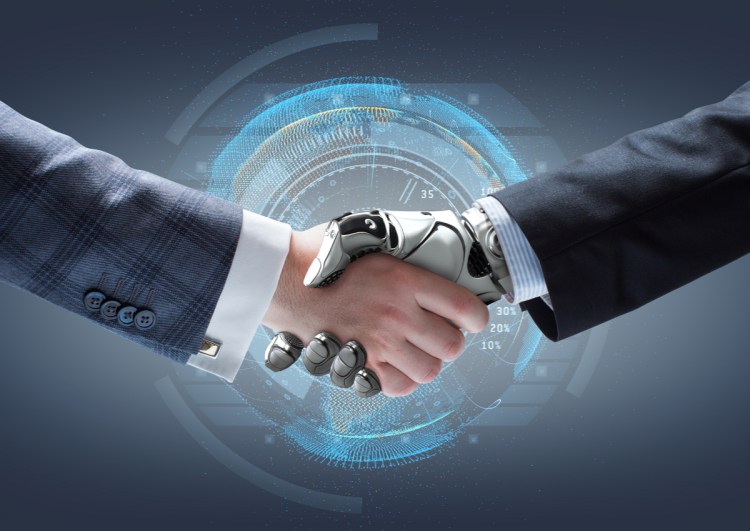At this moment, there are computers using artificial intelligence to make decisions about the best courses of medical treatment, the quickest routes to take on a road trip, and the chess moves most likely to win a game. There’s even a Chinese supercomputer that can perform 33,860 trillion calculations per second, leading experts to speculate that one day, AI will be able to predict the stock market even better than the top finance professionals.
As we come to terms with the fact that machines are essentially guaranteed to surpass human computation-based abilities, many people take comfort in the fact that we still have the advantage when it comes to “soft skills.” Soft skills include things like communication and interpersonal skills. For AI engineers, however, soft skills are simply the next frontier.
Soft skills and why they matter
Soft skills can be hard to define, and the very reason that they’re so complex for computers to learn is that they’re not black and white. In a world programmed in 0s and 1s, things like empathy, self-awareness, and social skills are about as far from binary as you can get.
That means computers don’t understand emotions in the same way humans do. While a lack of emotion can be beneficial in terms of granting computers more discipline, patience, and objectivity than a person, it robs them of the empathy that forms the core of emotional intelligence, or EQ. Emotional intelligence and soft skills are closely related. Without improving the former, it is nearly impossible to develop the latter.
June 5th: The AI Audit in NYC
Join us next week in NYC to engage with top executive leaders, delving into strategies for auditing AI models to ensure fairness, optimal performance, and ethical compliance across diverse organizations. Secure your attendance for this exclusive invite-only event.
Some in the field would argue that EQ is irrelevant to artificial intelligence and that a high IQ is enough to keep advancing. After all, soft skills don’t directly accomplish tasks, and they don’t check boxes. But that argument is short-sighted. Soft skills may not directly get a task done, but they are certainly a catalyst for doing so.
Can we teach a computer EQ?
While it was once thought that computers would never be able to demonstrate true emotional intelligence, examples are starting to blur those lines. In one study, computers were able to detect criminals with a high degree of accuracy just by looking at their facial features and movements. This means they’re getting good at reading people, a key social attribute that aligns with some degree of EQ.
Closer examination shows that while the computers may be able to read people, that doesn’t necessarily mean they can understand people. They were able to pick out the criminals by analyzing incredible amounts of data about facial features. The decisions the computers made were based not on insight, but on algorithms.
There are plenty of similar examples in which a machine can demonstrate the appearance of empathy when they’re actually just running the numbers. Computers now have the ability to detect emotion in your voice with 80 percent accuracy. They can also detect when a student is struggling by judging their engagement versus frustration when taking a test. This is all based on huge reservoirs of data.
That ability to “fake it” can certainly be impressive, but it is also artificial. There’s nothing truly emotional about a machine’s intelligence; it’s operating entirely on objective attributes.
Small steps to soft-skill success
There are some areas where even that fake emotion proves useful. For example, in 1-on-1 interactive roles like customer service, teaching, and medicine, attentiveness is one of the crucial soft skills for success. One professor appeared to master this skill when he created a virtual teaching assistant he named “Jill.” The professor equipped Jill with the ability to be a highly active and engaged listener. With Jill, the students could receive dynamic answers to their questions, helping them stay up-to-date on all of the course information and not fall behind.
Other soft skills, such as nuanced communication, are tougher for artificial intelligence to master. For example, engineers tried to teach robots how to use motivational language, such as InspiroBot. If successful, this technology would ideally inspire optimism and promote higher achievement. Instead, the results were deeply disturbing and even a bit bizarre. InspiroBot’s inspirational phrases ranged from the overly meta “where am I?” to the odd thought exercise “how would the world look if every human being found a way to help ghosts?”
In spite of setbacks, the most important takeaway is that the core idea behind teaching robots how to engage in effective communication still does hold up. Robots have the ability to analyze which phrases promote trust, action, surprise, or other strong emotions. We can teach them to use those phrases and measure reactions accordingly, constantly adjusting their approach via machine learning.
High hopes for the future
The industry still has a long way to go, but we’ve already seen how developers are increasingly grappling with soft skills and taking steps toward progress. We’ve also seen promising instances of how AI machines can communicate with each other, developing their own unique ways to interact and even inventing languages for more accurate translations.
Clearly, even the machines themselves understand the importance of communication and relationships. As InspiroBot program likes to tell its users, “bots are your friends.” Maybe, one day, they really will be.
Jon Belsher is the chief medical officer for MedSpring Urgent Care, a chain of clinics that has grown to over 35 centers across five large metropolitan markets since 2011.


